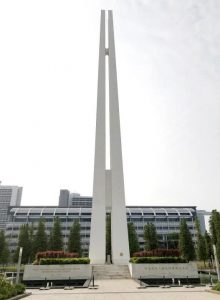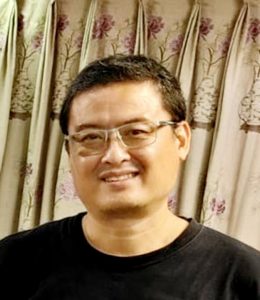Amid massacres by Japan’s Army in Singapore, Japanese military officer spared lives of overseas ethnic Chinese by filing falsified report of their execution
Jan. 14, 2024
Researcher seeks information on “Commander Ichikawa”
by Masakazu Domen, Senior Staff Writer
In 1942, in the early days of the Pacific theater of World War II, the Japanese Army carried out mass executions of Chinese residents of Singapore as “hostile overseas ethnic Chinese” following Japan’s invasion of Singapore. One Japanese officer, however, released some of the ethnic Chinese residents based on his falsified report of their execution. The officer in question is said to have been Major Tadashi Ichikawa, commander of the Hiroshima-based 3rd Battalion, 11th Infantry Regiment of the 5th Division of the Imperial Japanese Army. Some of the surviving family members of those whose lives were saved by Mr. Ichikawa were recently identified. Nobuyoshi Takashima, 81, professor emeritus at the University of the Ryukyus who is a resident of Tokyo, is well-versed in the area of massacres of ethnic Chinese living overseas. He is now engaged in gathering information about Mr. Ichikawa in preparation for his upcoming visit to Singapore in February.
According to such sources as historical accounts of the regiment, on February 21, 1942, immediately after the fall of Singapore at its hands, the Japanese Army put together a security detail to maintain public order and purge anti-Japanese elements from the local population. Facing resistance from an ethnic Chinese volunteer army during the Battle of Singapore, the Japanese Army executed Singaporean Chinese males between the ages of 18 and 50 after they were ordered to assemble, without verifying whether they had carried out acts of hostility. According to Mr. Takashima, the Japanese military regarded ethnic Chinese as enemies and carried out massacres in other parts of the Malay Peninsula near Singapore. “There is an ongoing debate about whether the number of victims was in the thousands or in the tens of thousands,” explained Mr. Takashima.
The 3rd Battalion, led by Major Ichikawa, had been folded into the security detail. After the war, Mr. Ichikawa was one of those summoned by the Allied Forces to appear in court in Singapore on charge of war crimes. The battalion’s report indicated that, “Eleven hostile ethnic Chinese were handed over and executed.” Mr. Ichikawa, for his part, claimed that he had released the ethnic Chinese clandestinely on the pretense that they had been executed. After an investigation of events, a survivor had come forward and verified Mr. Ichikawa’s account. Mr. Ichikawa was thus declared not guilty and released.
Mr. Ichikawa was described as telling one of his cohorts at the time, “From all appearances, they were ordinary citizens. If we oppressed them in that way, we would not have been able to obtain cooperation from residents in the future. After consulting with my lieutenants, I submitted a falsified report.”
Mr. Takashima and his associates have made nearly 50 tours to the area to survey the scars of war. Last August, he met a guide who said that his grandfather on his mother’s side was one of those released by Mr. Ichikawa. The guide, a man in his 50s named Tan Benyon, indicated his wish to “have contact with people related to Commander Ichikawa.”
About 30 years ago, Mr. Takashima exchanged letters with members of Mr. Ichikawa’s family, but he has had no word from them recently. He is seeking information about Mr. Ichikawa, his family, and his acquaintances in preparation for his next visit to the area during February 15–18, which will include an opportunity for them to listen to Mr. Tan’s account. According to Mr. Takashima, “I hope to gain more detailed information to better understand why Mr. Ichikawa acted in that manner. My work is not for the purpose of denying responsibility for the massacre of ethnic Chinese, but rather to prevent the tragedy of war from repeating itself.”
Mr. Takashima can be reached at the following telephone number: 080-1140-1722.
(Originally published on January 14, 2024)









